ZEN MESTEREK ZEN MASTERS
« Zen főoldal
« vissza a Terebess Online nyitólapjára
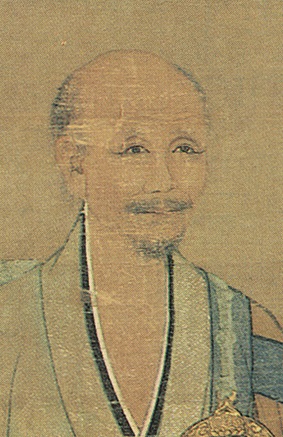
無準師範 Wuzhun Shifan (1178–1249)
(Rōmaji:) Bujun Shiban (alt. reading Mujun Shihan)
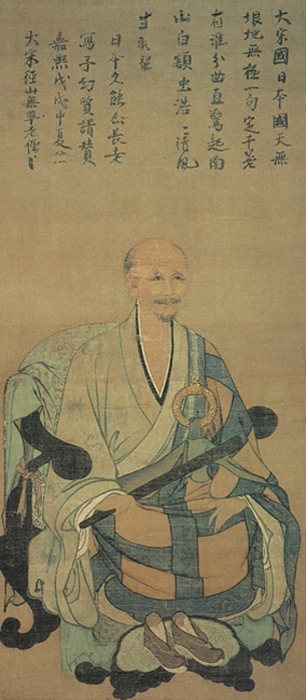
Portrait of Wuzhun Shifan 無準師範頂相
Anonymous. Dated 1238, Southern Song (1127 - 1279)
Inscription by 圓爾辯圓 Enni Ben'en (1202–1280)
Ink and colour on silk, hanging scroll, 123.8 x 55.2.
Tōfuku-ji, 東福寺, Kyoto
National Treasure
無準師範 Wuzhun Shifan (1178–1249) was a Chinese painter, calligrapher, and prominent Zen Buddhist monk, master of 無學祖元 Wuxue Zuyuan (J., Mugaku Sogen, 1226–1286) aka 仏光国師 Bukko Kokushi.
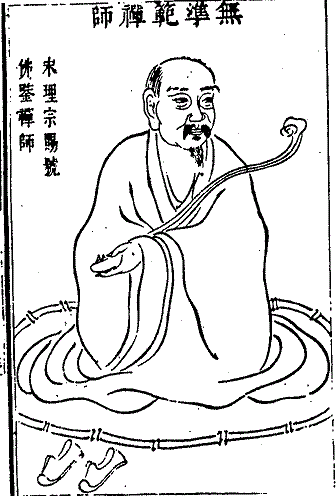
無準 師範/圓照 Wuzhun Shifan/Yuanzhao, 1177–1249
[Bushun Shihan/Enshō]
Wuzhun Shifan. (J. Bujun Shihan/Bushun Shiban/Mujun Shihan; K. Mujun Sabŏm
無準師範) (1178–1249). Chinese CHAN master in the LINJI ZONG. After his
ordination in the winter of 1194, Wuzhun studied under a series of famed Chan
masters, including FOZHAO DEGUANG and Po’an Zuxian. Wuzhun eventually
attained awakening under Po’an and succeeded his lineage. During his illustrious
career at such important monasteries as WANSHOUSI on Mt. Jing, Wuzhun also
taught the Japanese pilgrims Hōshin (d.u.), Dōyū (1201–1258), and the famed
ENNI BEN’EN, who is now regarded as the first exponent of ZEN in Japan.
Wuzhun was later summoned by Emperor Lizong (r. 1224–1264) to provide a
public lecture at the Pavilion of Benevolent Illumination in the imperial palace.
The emperor later bestowed upon him the title Chan master Fojian (Buddha
Mirror). Wuzhun left many famous disciples such as WUXUE ZUYUAN and
Mu’an Puning, both of whom went to Kamakura in Japan and served as abbots of
the powerful monastery of KENCHŌJI.
The Princeton Dictionary of Buddhism (2014)
Wuzhun Shifan's Dharma Lineage
[...]
菩提達磨 Bodhidharma, Putidamo (Bodaidaruma ?-532/5)
大祖慧可 Dazu Huike (Taiso Eka 487-593)
鑑智僧璨 Jianzhi Sengcan (Kanchi Sōsan ?-606)
大毉道信 Dayi Daoxin (Daii Dōshin 580-651)
大滿弘忍 Daman Hongren (Daiman Kōnin 601-674)
大鑑慧能 Dajian Huineng (Daikan Enō 638-713)
南嶽懷讓 Nanyue Huairang (Nangaku Ejō 677-744)
馬祖道一 Mazu Daoyi (Baso Dōitsu 709-788)
百丈懷海 Baizhang Huaihai (Hyakujō Ekai 750-814)
黃蘗希運 Huangbo Xiyun (Ōbaku Kiun ?-850)
臨濟義玄 Linji Yixuan (Rinzai Gigen ?-866)
興化存獎 Xinghua Cunjiang (Kōke Zonshō 830-888)
南院慧顒 Nanyuan Huiyong (Nan'in Egyō ?-952)
風穴延沼 Fengxue Yanzhao (Fuketsu Enshō 896-973)
首山省念 Shoushan Shengnian (Shuzan Shōnen 926-993)
汾陽善昭 Fenyang Shanzhao (Fun'yo Zenshō 947-1024)
石霜/慈明 楚圓 Shishuang/Ciming Chuyuan (Sekisō/Jimei Soen 986-1039)
楊岐方會 Yangqi Fanghui (Yōgi Hōe 992-1049)
白雲守端 Baiyun Shouduan (Hakuun Shutan 1025-1072)
五祖法演 Wuzu Fayan (Goso Hōen 1024-1104)
圜悟克勤 Yuanwu Keqin (Engo Kokugon 1063-1135)
虎丘紹隆 Huqiu Shaolong (Kukyū Jōryū 1077-1136)
應庵曇華 Yingan Tanhua (Ōan Donge 1103-1163)
密庵咸傑 Mian Xianjie (Mittan Kanketsu 1118-1186)
破庵祖先 Poan Zuxian (Hoan Sosen 1136–1211)
無準師範 Wuzhun Shifan (Bujun Shipan 1177–1249)
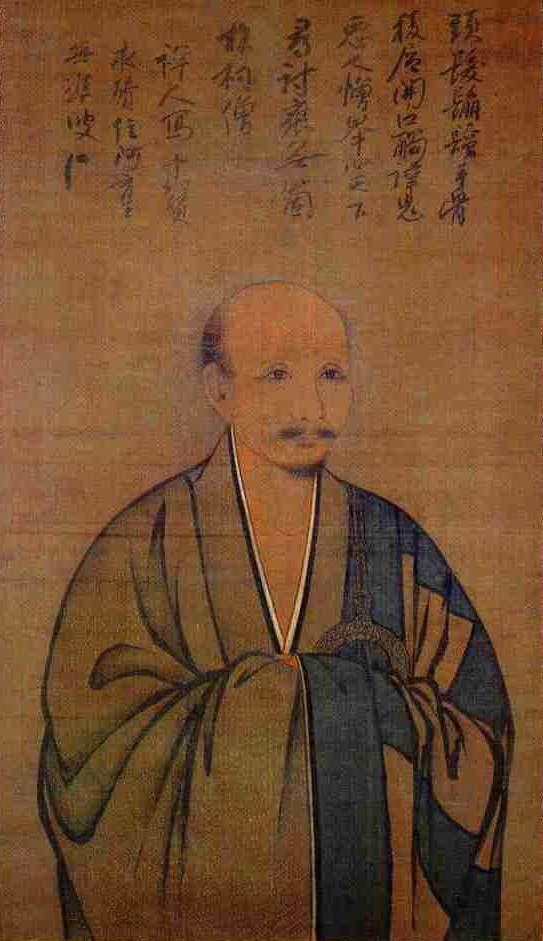
Portrait of Wuzhun Shifan
Hanging scroll, color on silk, 103.3 cm × 59.3 cm (Tōfuku-ji, Kyoto)
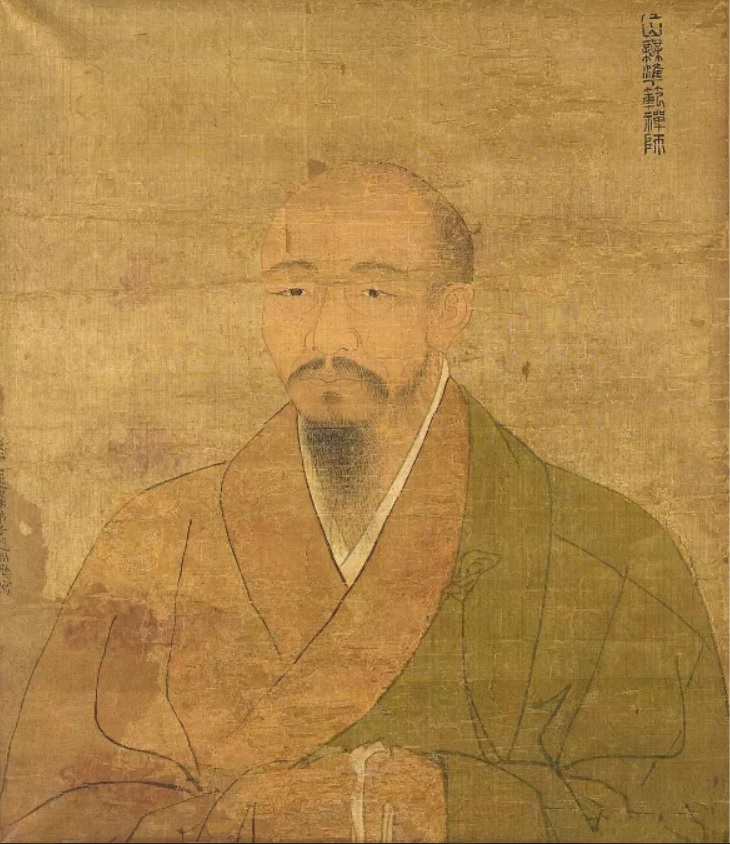
Portrait of Wuzhun Shifan
赵用贤,《无准师范像》 , 1590 年, 绢本设色,荷兰阿姆斯特丹国家博物馆藏
http://www.sohu.com/a/114264063_488954
Painted in a few swift brushstrokes and deftly applied ink washes, Chan Master Riding a Mule exemplifies the freely expressive manner of Chan (Zen, in Japanese) Buddhist painting, which relies less on descriptive detail than on the capturing of spiritual concentration within the artist to achieve a vivid depiction. Inscribed by the noted Chan master Wuzhun Shifan (无准师范), to whom it traditionally has been attributed, the painting is probably the work of a contemporary Chan artist following the sketchy brush style of Liang Kai (梁楷).

Chan Master Riding a Donkey 騎驢圖
Anonymous Before 1249, Southern Song (1127-1279)
Encomium by Wuzhun Shifan 無準師範 (1178-1249)
Hanging scroll, ink on paper, 64.1 x 33 cm
Metropolitan Museum of Art, 1989.363.24
Wuzhun, well known for his wisdom as well as for his eccentric behavior, inscribed this painting while he was living at the Qingshansi, a Chan temple near Hangzhou, where he settled after he was rewarded by Emperor Lizong (r. 1225–1264) following an imperial audience. The rider's facial features-prominent forehead, mustache, and wispy beard-are not unlike those of Wuzhun himself, whose formal portrait, with an inscription by him dated 1238, is now in the Tofuku-ji temple in Kyoto. His laconic inscription may also be a self-deprecatory reference to himself:
Encomium:
As rain darkens the mountain, one mistakes a donkey for a horse.
Written by Monk Shifan of Jingshan.
雨來山暗,認驢為馬。徑山僧師範書 。
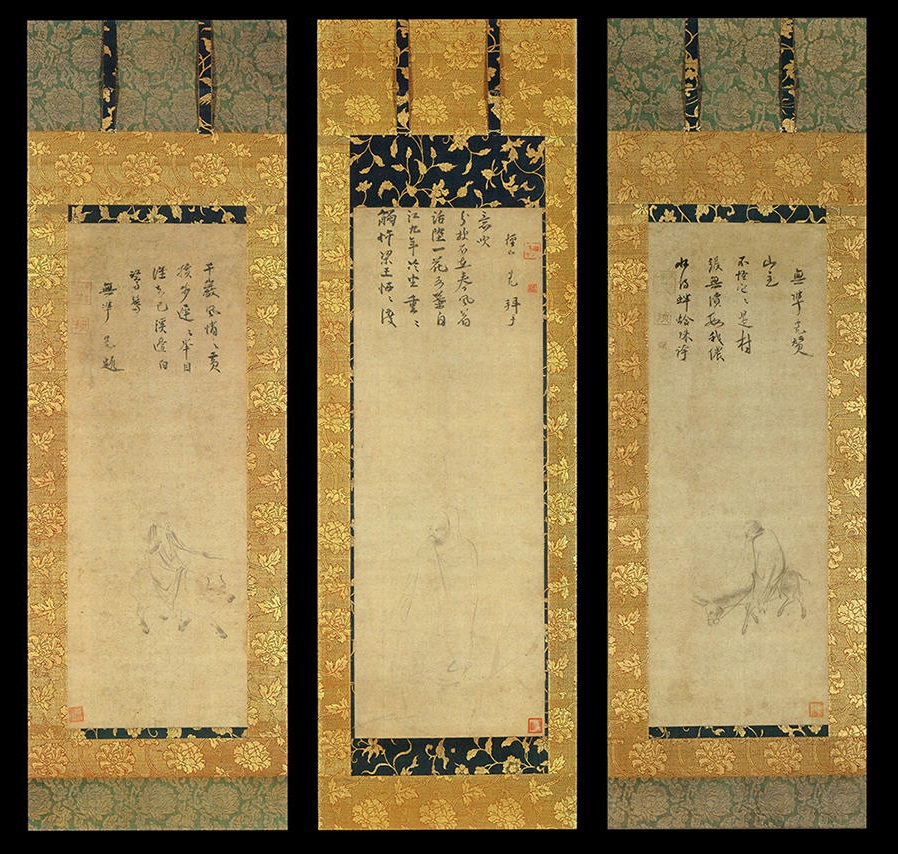
Triptych, formerly in the collection of the Ashikaga Shogun Yoshimitsu 足利義満 (1358-1408, r. 1368-94),
preserved today in the Tokugawa Art Museum 徳川美術館
Master of the Beautiful Mountain (Yushanzhu) 郁山主圖. (right)
Bodhidharma Crossing the Yangzi on a Reed 蘆葉達摩圖. (middle)
Yellow Ox Zheng (Zhenghuangniu) 正黃牛圖 [Wei Zheng 惟正 (986-1049)]. (left)
All three paintings are attributed to and inscribed by Wuzhun Shifan.
達磨・政黄牛・郁山主図 だるま・せいおうぎゅう・いくさんしゅず
名物
中幅は達磨が梁(りょう)の武帝のもとを去って魏に向かった際、芦の葉に乗って河を渡ったという故事を描く。右幅は驢馬(ろば)から転落した瞬間大悟(たいご)したという仁郁(じんいく)禅師(郁山主図)、左幅は黄牛に跨り市中を徘徊したという北宋の惟政(いせい)禅師(政黄牛図)を画題とする。各幅に3代将軍足利義満の鑑蔵印である「道有」印が捺され、三幅一対の東山御物として伝来したが、中幅と左右幅で手が異なり、日本で異種配合されたと推測される。
本品は無準師範(ぶしゅんしばん)(1178~1249)の自画自賛の作として珍重されてきた。無準は、南宋五山の主位を占めた径山万寿寺(きんざんまんじゅじ)の禅僧で、日本の留学僧も多く参禅し、日本の禅宗興隆に大きな影響を与えた。
成瀬正虎(成瀬家2代)・徳川光友(尾張家2代)所用。
【重要美術品 中国・南宋時代 13世紀】
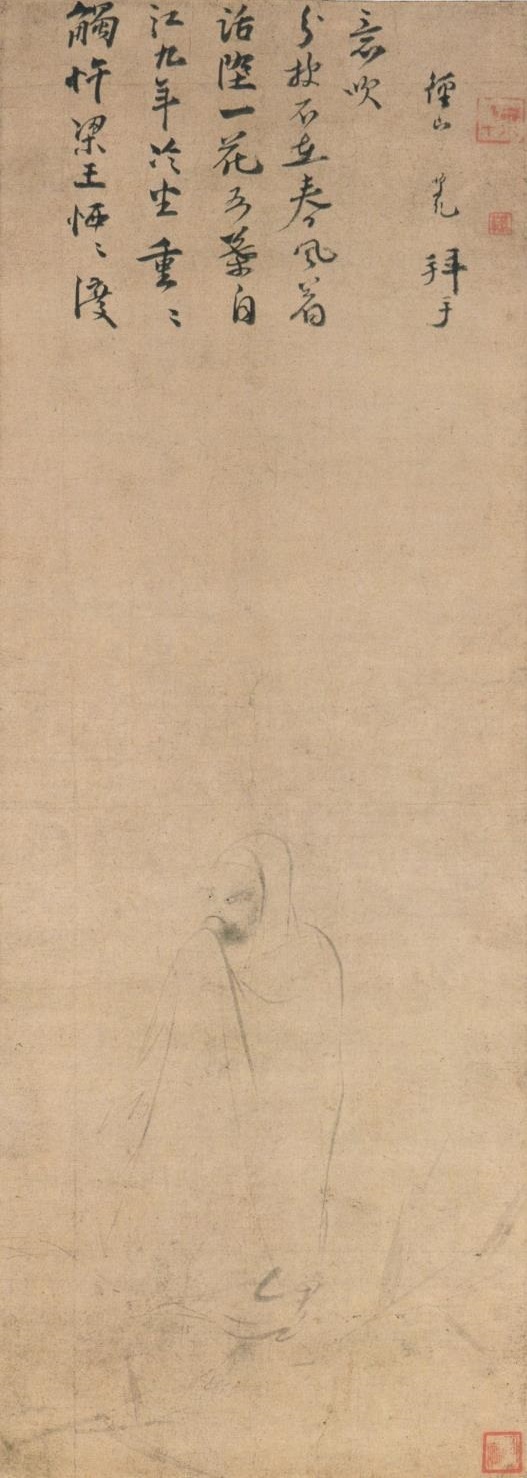
Bodhidharma Crossing the Yangzi on a Reed 蘆葉達摩圖
Attributed to Wuzhun Shifan 無準師範 (1178-1249)
First half of the 13th century, Southern Song (1127-1279)
Encomium by Wuzhun Shifan
Hanging scroll, ink on paper 89.1 x 32 cm
Tokugawa Art Museum, Nagoya
Important Artwork
Encomium:
Oh so vexed by the encounter with the ignorant King of Liang,
Crossing the river to sit in the cold for nine successive years,
Speaking of one flower, of which five petals open themselves,
Absent, the spring wind manifests your intent in its breeze.
Shifan of Jingshan bows [with folded] hands.
觸忤梁王恓恓,渡江九年冷坐重重, 話墮一花五枼自分披,不在春風著意吹 。 徑山師範拜手 。
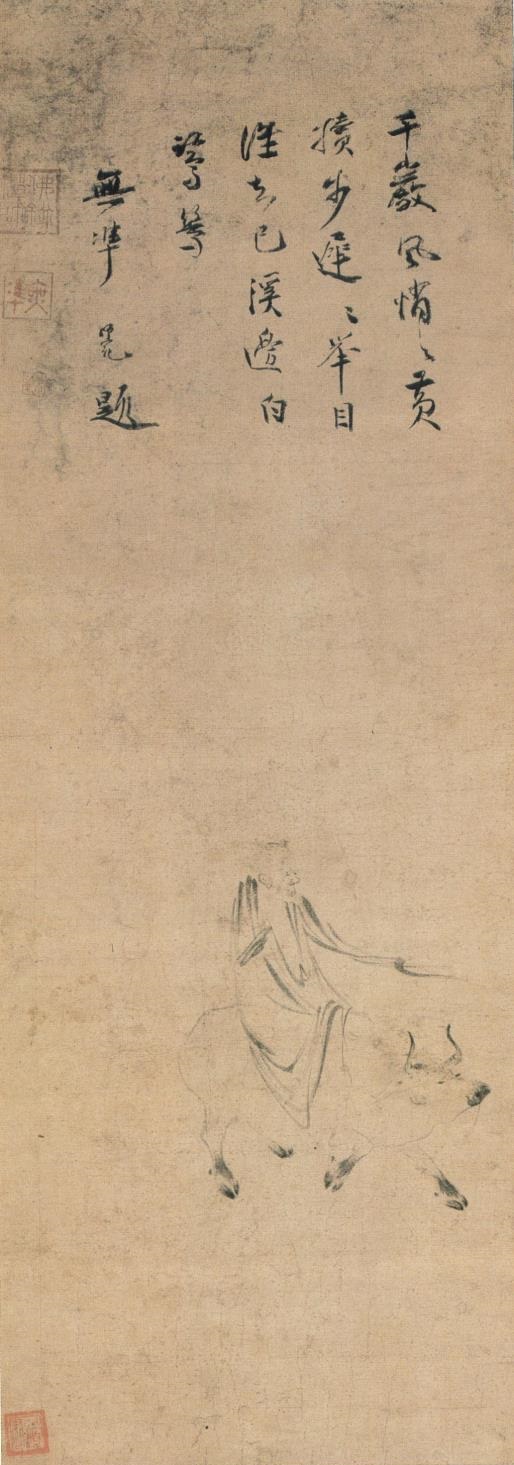
Yellow Ox Zheng (Zhenghuangniu) 正黃牛圖 [Wei Zheng 惟正 (986-1049 )]
Attributed to Wuzhun Shifan 無準師範 (1178-1249) Before 1249, Southern Song (1127-1279)
Encomium by Wuzhun Shifan
Hanging scroll, ink on paper, 84.1 x 30 cm
Tokugawa Art Museum, Nagoya
Important Work of Art
Encomium:
The soft wind amidst a thousand cliffs,
The slow, slow steps of the yellow ox,
Raising your eyes who are your intimate companions?
The white egrets and cormorants at the brook's bank.
Eulogised by Wuzhun Shifan.
千巖風悄悄 , 黃犢歩遲遲 , 舉目誰知己 ? 渓邊白鷺鶿 。 無準師範提。
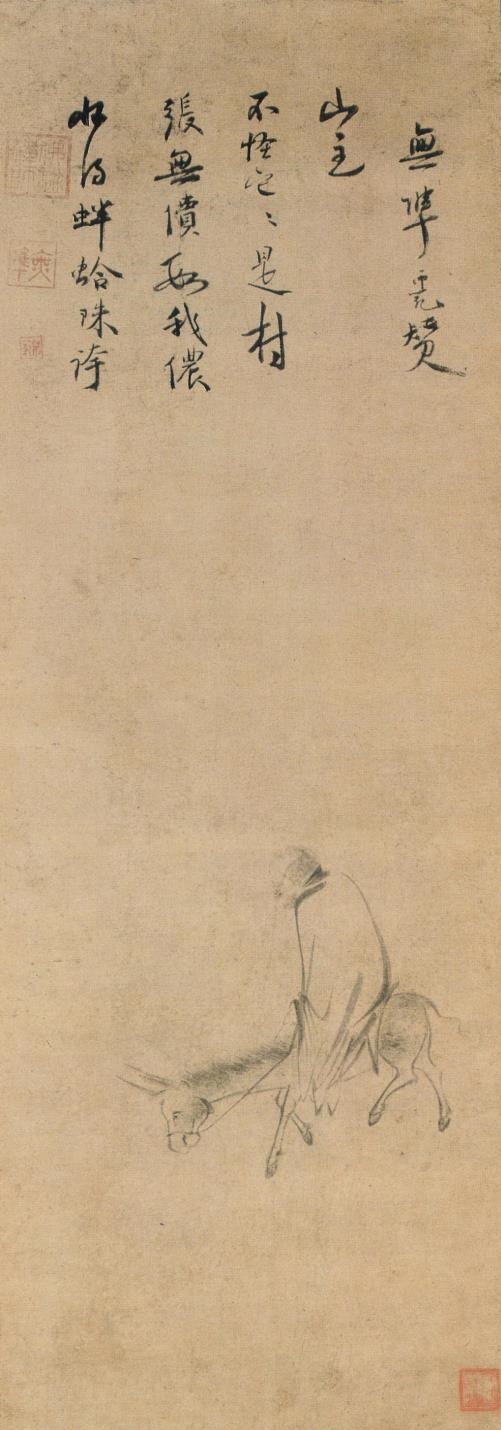
Master of the Beautiful Mountain (Yushanzhu) 郁山主圖
Attributed to Wuzhun Shifan 無準師範 (1178-1249) Before 1249, Southern Song (1127-1279)
Encomium by Wuzhun Shifan
Hanging scroll, ink on paper 84.1 x 30 cm
Tokugawa Art Museum, Nagoya
Important Work of Art
Encomium:
Obtaining the pearl of a clam,
Boasting of its incalculable value,
You and I do not find him strange,
He is the Master of the Mountain Villages.
Eulogised by Wuzhun Shifan.
收得蚌蛤珠,誇張無價數, 我儂不怪 它 , 它 是村山主。 無準師範贊。